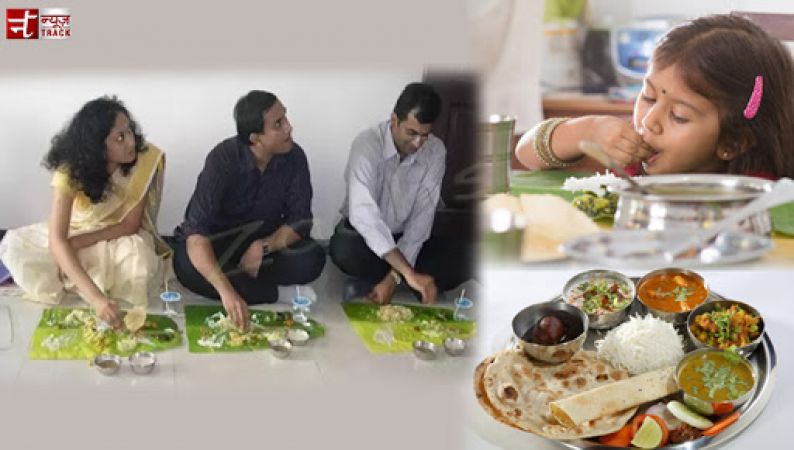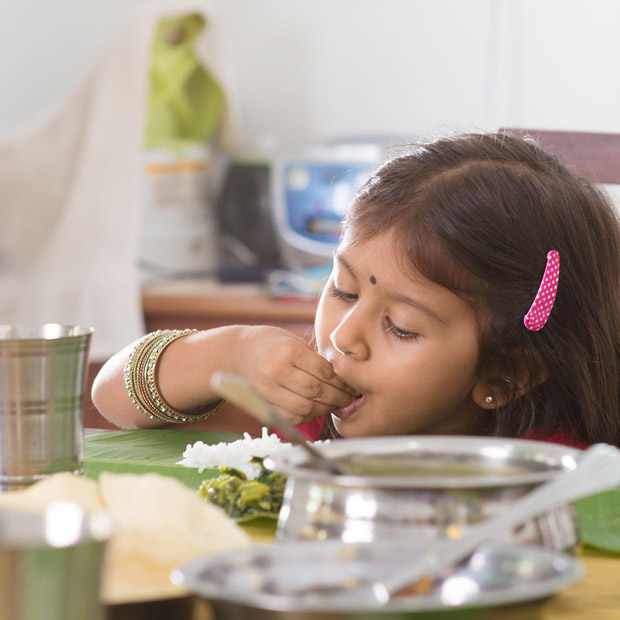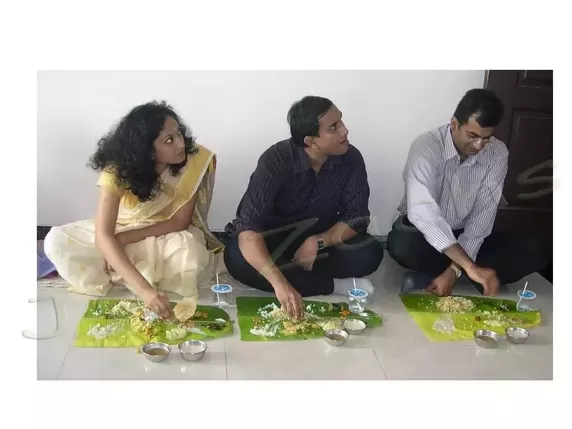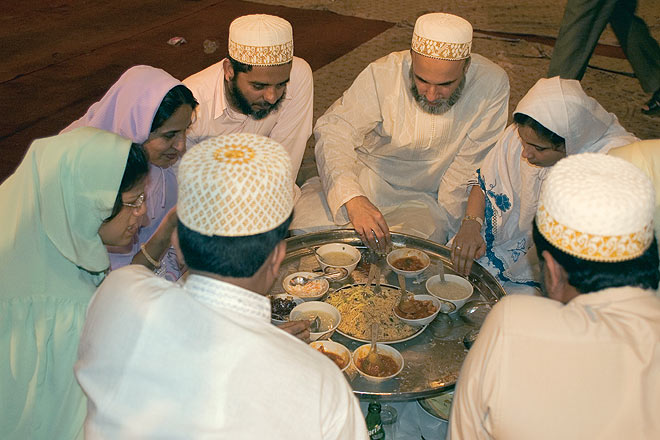
'Yeh hai taste India ka', Eating in Table defines the essence of a 'meal'. On the other hand, eating is a physical need, meals are a social ritual. And when we come to our Indian meals about and dining behaviour, they are made on traditions. And traditions are nothing else but a perfect combination of invasions, religious beliefs, political changes and social customs. Here we are going to introduce you to explore such 5 Indian food traditions that are a result of these elements. With health and mutual bonding as major reasons behind these traditions, they are also an extension of religious beliefs and practices.
For an example, serving on one plate for all is a tradition introduced by the 'Bohri Muslim community'. According to the tradition, food is served on a big platter called ‘thal’. The entire family eats out of the same plate which is not meant to have any leftover food. Surprisingly, the first course is usually a dessert dish followed by a meat appetizer.
In the community’s literature, it is mentioned that starting the meal with a sweet dish is considered pleasant. Similarly, Jop Pan is a traditional plate of a light snack served before breakfast across Bengal and Assam and is considered very effective in fighting general diseases. The major ingredients used in this plate are rice and curd along with jaggery. It is also accompanied by a steaming cup of tea. Read below to know more about these 5 popular Indian food traditions and the philosophy behind them.
Indian thali

Recognized as a wholesome meal, Indian thalis can be found in various areas like Rajasthan, Gujarat, Kashmir, and Kerala. The USP of these thalis are the local elements and essences designed and developed keeping the climatic conditions in mind. Though these homemade dishes have gone commercial, still, the authentic homemade thalis can still be relished in these regions that are full of protein, vitamin, healthy fat, and carbohydrate. They can be definitely called as ‘balanced diet of India’.
Eating with hands

According to Ayurveda, the practice excites the five elements that our five fingers represent and thus helps in bringing forth digestive juices that makes digestion of food easy. According to Vedas, the practice directly helps our chakras, and the use of hands for eating also increases the blood circulation. When we eat with hands the nerves ending on the fingertips send a signal to the stomach and thus we get a better taste, texture, and aroma of the food. You will be astonished to know that apart from India, it is also practised in some parts of Africa and the Middle East.
Eating on the floor

Majorly practised in rural regions of India, this practice of eating is suggested because the repeated bending of the spine is helpful in improving the blood circulation and is a kind of physical activity that improves the metabolism.
One plate for all

Entered by the Bohri Muslim community, this tradition of eating is a representative of unity in diversity. According to the tradition, food is served on a big platter called ‘thal’. The whole family eats out of the same plate which is not meant to have any leftover food. Surprisingly, the first course is usually a dessert dish followed by a meat cocktail. In the community’s literature, it is mentioned that starting the meal with a sweet dish is considered blissful.
Glass of milk on wedding night

Known as a customary ritual pan India, the thought of this food tradition is again health centric. The purpose of this concept is to reduce the stress and bring relief. Milk is a good vrishya (aphrodisiac) that gives strength to the reproductive tissues and also strengthens the memory and boosts immunity. It is quickly digested and absorbed by the body that’s why it is served at night.